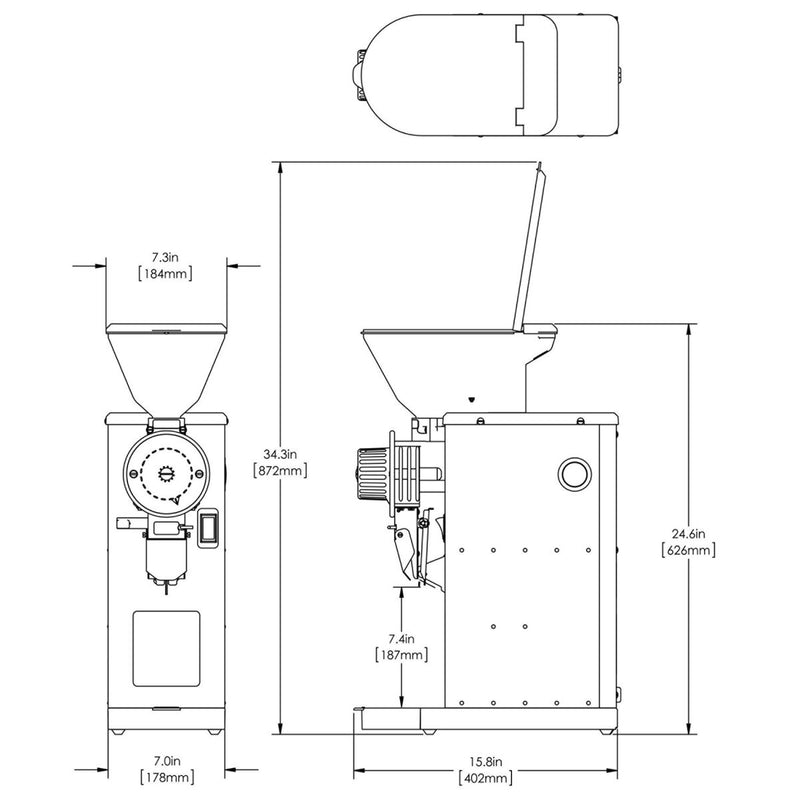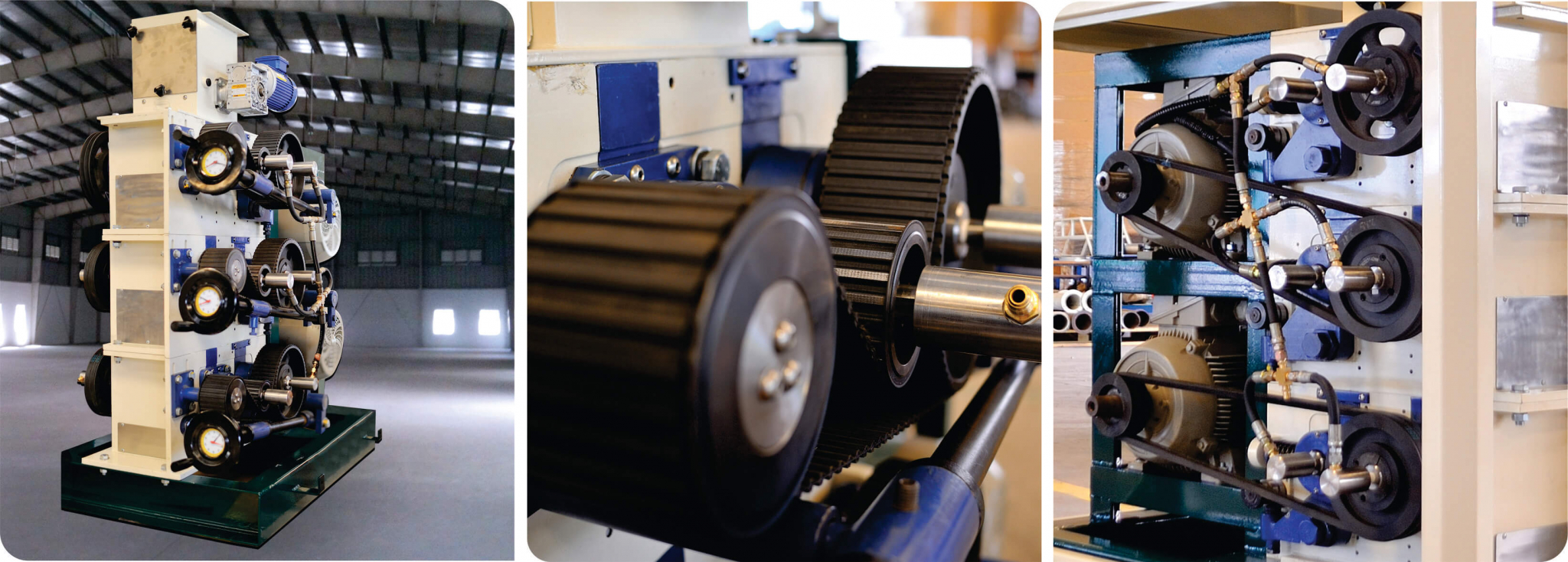Industrial Coffee Grinder: Advantages, Disadvantages, and Features to Consider
Industrial Coffee Grinder: Advantages, Disadvantages, and Features to Consider
Blog Article
Industrial Coffee Mill Overview: Boost Performance and High Quality
In the competitive landscape of coffee production, selecting the right industrial coffee grinder plays a critical role in boosting both efficiency and product high quality. Understanding the nuances of various grinder kinds and key functions-- such as customizable grind settings and durable building-- can substantially influence the last taste profile of the coffee. The optimization of the grinding process, paired with attentive upkeep, is vital for maintaining efficiency over time. As we check out these vital elements, it becomes evident that the implications extend beyond mere tools option, affecting general organization success in methods that warrant closer assessment.
Understanding Mill Kinds
When choosing a commercial coffee grinder, comprehending the numerous kinds available is important for maximizing both taste removal and operational efficiency. Both primary sorts of grinders are blade mills and burr mills. Blade mills make use of sharp blades that chop coffee beans right into inconsistent dimensions, bring about uneven extraction and potentially unwanted tastes. While blade mills are commonly a lot more appropriate and budget-friendly for small-scale operations, they are normally not advised for industrial usage.

Inevitably, selecting the ideal kind of grinder is integral to maintaining quality and performance in coffee manufacturing, making it crucial for companies to buy high-grade burr grinders for ideal results.
Key Functions to Think About
Picking an industrial coffee grinder calls for mindful consideration of several crucial features that can substantially affect both efficiency and the overall coffee experience. One of the primary facets to evaluate is the grinding mechanism. Burr mills are usually chosen over blade mills, as they supply a regular work dimension, which is vital for optimum extraction and taste.
One more crucial attribute is the grinder's capacity. Depending on the volume of coffee you need to process, choose a design that can manage your demands without sacrificing rate or quality. Furthermore, take into consideration the work settings used. A versatile grinder with several setups permits you to customize the work dimension to various developing approaches, boosting the coffee's taste account.
Evaluate the grinder's noise level, especially in a hectic café or manufacturing environment, where excessive noise can be turbulent. Spending in a grinder that stabilizes these features can substantially boost both functional effectiveness and the quality of the coffee served.
Optimizing Grinding Process
To attain the most effective lead to coffee prep work, maximizing the grinding process is important. The grind size dramatically influences removal, taste, and total high quality of the brewed coffee. Different developing approaches require certain grind dimensions; as an example, espresso requires a fine work, while French press necessitates a crude structure. Recognizing the connection in between work size and developing method is the initial step in optimization.


Furthermore, keeping track of the grinding speed can optimize the process. Slower grinding often creates less heat, preserving delicate flavors and aromas. Alternatively, faster grinding may produce extreme warm, adversely influencing the coffee's high quality.
Upkeep and Treatment Tips
Correct maintenance and treatment of commercial coffee mills are important for making sure optimal efficiency and longevity. Normal cleaning is the foundation of upkeep; deposit accumulation can impact flavor and grinding effectiveness. It is a good idea to clean the mill after each use, wiping Related Site down the outside and getting rid of any coffee grounds from the burrs.
Additionally, check the grinding burrs for wear and tear. Plain burrs website here can jeopardize work consistency, so they need to be changed as essential. Industrial Coffee Grinder. Regularly adjusting the grinder is also critical, as this maintains the desired grind dimension for numerous developing techniques
Lubrication of relocating components should be performed according to the supplier's specs, as this lowers friction and extends the life of the tools. It is necessary to use food-grade lubricants to make certain security and compliance with wellness regulations.
Lastly, keep the mill in a completely dry and stable atmosphere to protect against rust and rust. By adhering to these upkeep and treatment suggestions, drivers can enhance the efficiency of their commercial coffee mills while making certain premium result and extended operational life.
Roi Analysis
Assessing the return on investment (ROI) for industrial coffee mills is essential for services seeking to enhance their coffee manufacturing abilities. A comprehensive ROI evaluation assists identify the economic feasibility of spending in high-quality grinders, allowing services to evaluate the preliminary expenses against prospective gains.
To conduct an extensive ROI evaluation, services must take into consideration several essential factors. Initially, analyze the purchase rate of the mill, consisting of installation and any required adjustments to existing infrastructure. Next off, calculate functional expenses, consisting of energy usage, see this site maintenance costs, and labor efficiency improvements. High-performance mills often lead to decreased grinding time and raised throughput, which can substantially boost efficiency.
Furthermore, think about the impact on product high quality. Industrial Coffee Grinder. Superior mills generate a more constant work size, which can boost taste accounts and consumer complete satisfaction, ultimately driving sales. By enhancing the quality of the end product, services can warrant higher rates, leading to increased revenue
Final Thought
In summary, a commercial coffee grinder plays a crucial duty in improving both effectiveness and item top quality within coffee manufacturing. By choosing top quality burr mills outfitted with vital attributes such as adjustable grind setups and sturdy building, businesses can guarantee optimal taste extraction. In addition, routine maintenance is vital for sustaining grinder performance and optimizing client satisfaction. Eventually, the strategic financial investment in a trusted mill adds considerably to enhanced income and competitiveness in the coffee industry.
In the affordable landscape of coffee production, choosing the right commercial coffee grinder plays a critical function in enhancing both performance and product high quality. The 2 key kinds of grinders are blade mills and burr grinders. Within the burr grinder category, there are level burr mills and conelike burr grinders, each with its benefits. Burr grinders are generally liked over blade grinders, as they offer a regular grind size, which is critical for optimum extraction and taste.
In recap, a commercial coffee mill plays a pivotal role in improving both effectiveness and product quality within coffee production.
Report this page